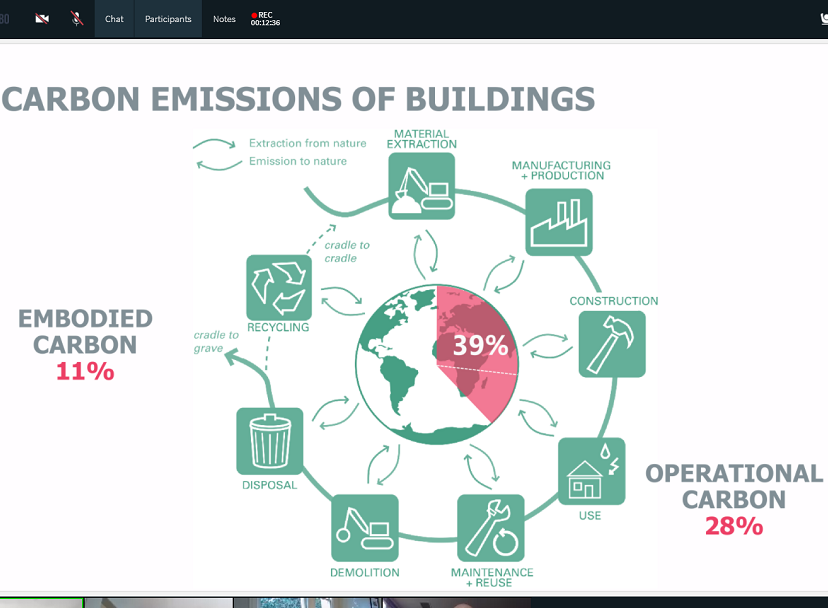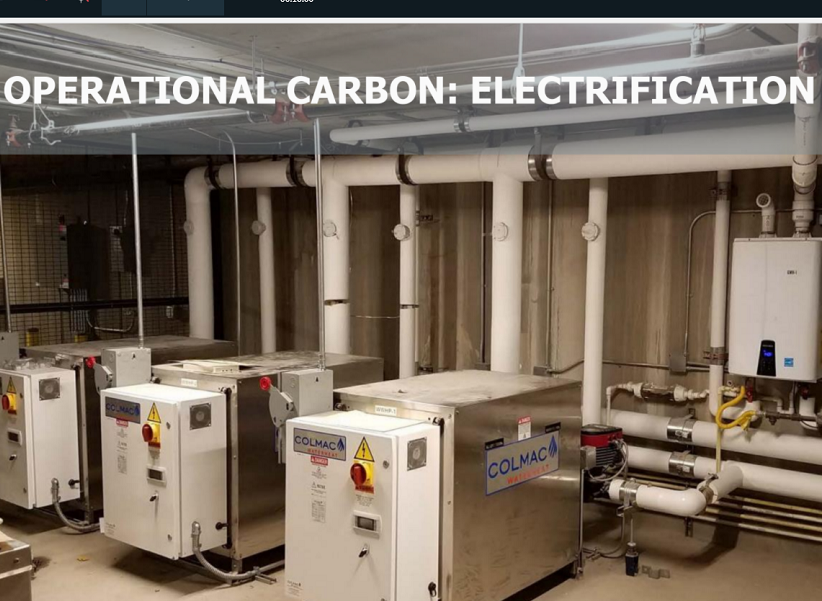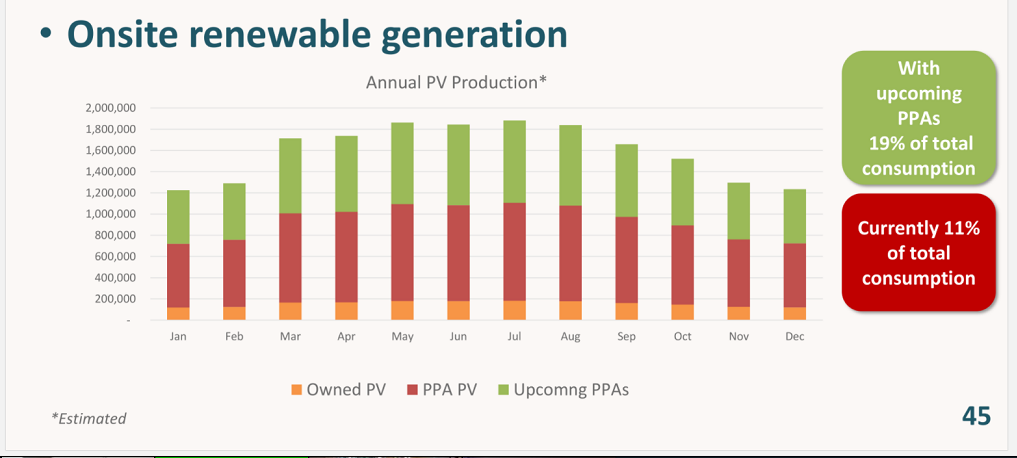Getting to Zero: Carbon-Cutting Strategies at Greenbuild
The U.S. Green Building Council's virtual conference takes a deep dive into the complex task of reducing carbon emissions from buildings.

Embodied carbon gets less attention than carbon produced by building operations but still accounts for 11 percent of total carbon emissions. Image courtesy of stok
At the Greenbuild virtual conference this week, much discussion has centered on the number 39. That’s the estimated share of carbon emissions generated by buildings. How property operators can dramatically reduce that share in the near future was the subject of a discussion on Wednesday afternoon.
Much of the attention to cutting carbon emissions has gone to building operations, which alone account for 28 percent of emissions globally. Multiple tactics are proven to help owners achieve the dramatic reductions necessary to combat carbon emissions, as detailed by Charlie Christenson, a partner at stok, an integrated real estate services firm. He outlined a series of key steps:
- Benchmark and setting goals
- Electrify properties in order to eliminate the use of fossil fuel sources
- Use energy modeling to assess impacts
- Bring in on-site renewable energy
- Explore off-site and utility scale options, if warranted
- Consider battery storage to cut costs as well as consumption, especially at peak times
- Implement cost-effective, high-impact reduction strategies
- Install renewable energy sources on-site to achieve net-zero carbon emissions.

Electrification is considered a major element in reducing carbon emissions. Image courtesy of stok
Christenson emphasized that property owners have considerable flexibility in adopting these measures. “It’s important to understand that emissions tied to our building operations is not a static number.”
Operators can link grid data to building controls, reducing lighting levels when demand is high. So, too, with electric vehicles, which the controller can space throughout the day based on information about demand on the grid. Using tools for measurement and verification are essential to track energy use, improve efficiency and adjust certain operations to optimum times.
Though building owners have made noteworthy strides in reducing carbon emissions from operations, embodied carbon is “a piece of the carbon emissions puzzle that hasn’t been touched,” said Boris Gamazaychikov, sustainability manager at stok. Part of the reason is that embodied carbon represents a much smaller share of total carbon emissions—11 percent—than the 28 percent linked to building operations.
Of that total, 88 percent is generated during extraction, transportation to the facility and manufacture, Gamazaychikov noted. “The vast majority of embodied carbon is emitted before the building is even opened,” he said. The issue is timely, since carbon emitted into the atmosphere today rather than a decade from now has 10 extra years to cause harm.
Although transportation does account for a significant share of embodied carbon, it is preferable to source building materials from a lower-carbon source, even if that source is farther away from the final destination at the property, he said.
Professionals in construction-related fields can help make good choices related to these materials. Strategies range from limiting emissions through performance requirements in specs, encouraging subcontractors to use low-carbon equipment and technology, and emphasizing the importance of reducing embodied carbon to clients. Stakeholder public agencies can contribute by incorporating performance requirements into building codes and seeing to it that those local codes allow mass timber construction.

Increasing on-site generation of renewable energy is part of San Diego County’s strategy for transforming county-owned buildings to net-zero energy by 2030.
An initiative by the San Diego County government provides an example of these principles in practice. A multi-faceted, two-year-old program aims to convert the county’s building footprint to net-zero energy by 2030. Fifth largest in the U.S. by population, the county also has the only net-zero energy plan created by a local government in California. The county plan addresses operations of a portfolio that encompasses 10 million square feet and 1,000 facilities with $20 million in annual energy costs.
The strategy features the use of energy management software to ensure that its facilities operate as efficiently as possible, reported Charles Marchesano, chief of the county’s energy and sustainability division. A new dashboard will permit the management of net-zero buildings and enable portfolio-wide comparisons.
Through solar power purchase agreements will increase the share of on-site renewable power used by county buildings from 11 percent to 19 percent. Under a new policy, all new county buildings will be net zero. So far the county has applied the principles to six buildings, with another four in the pipeline, Marchesano reported.







You must be logged in to post a comment.